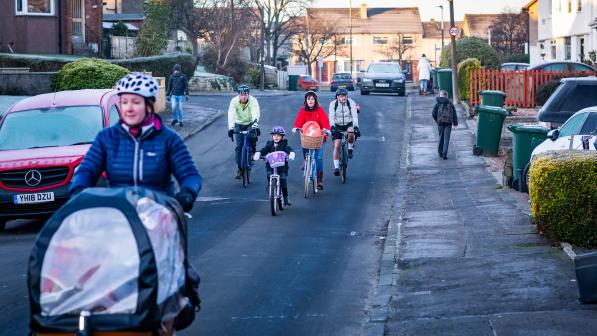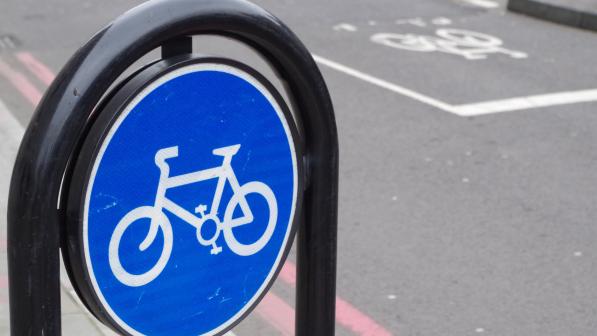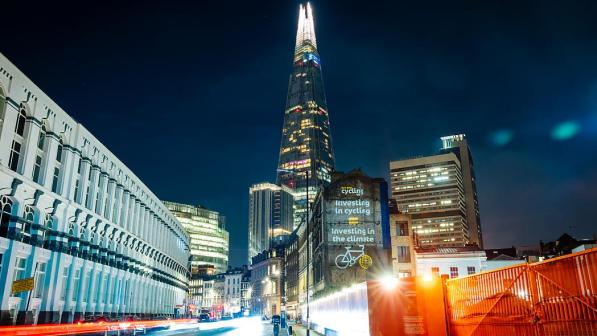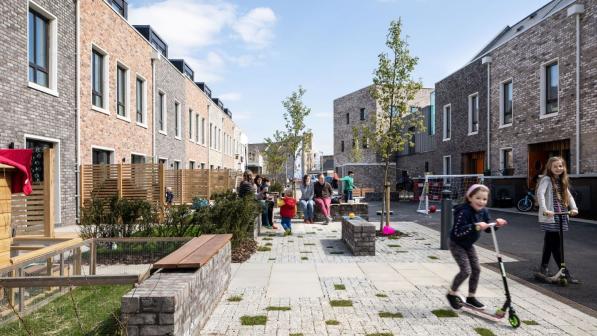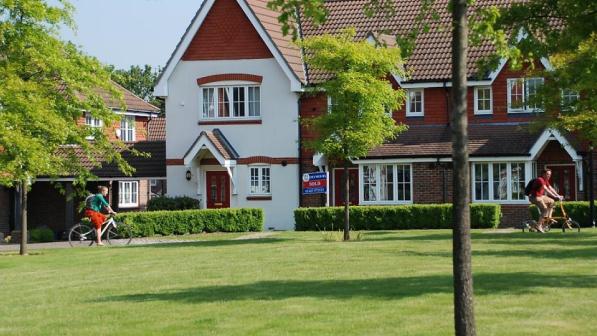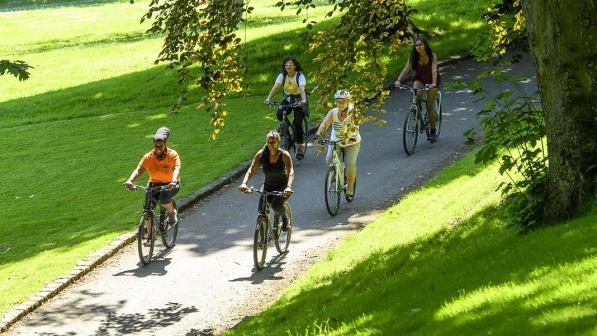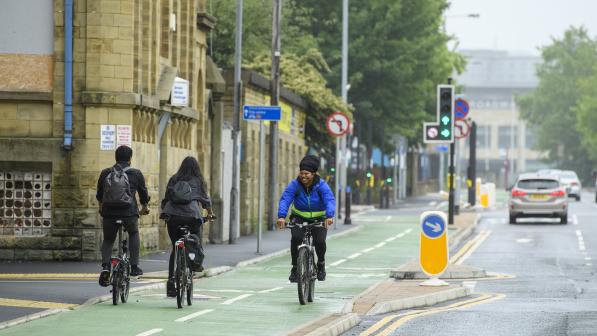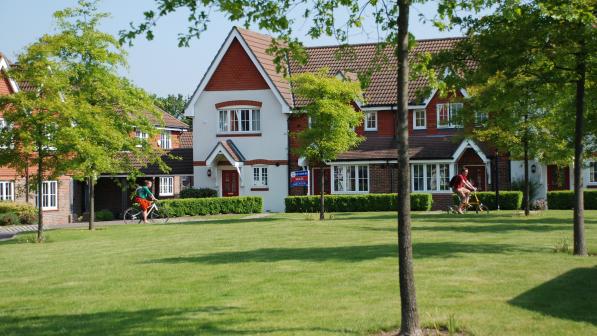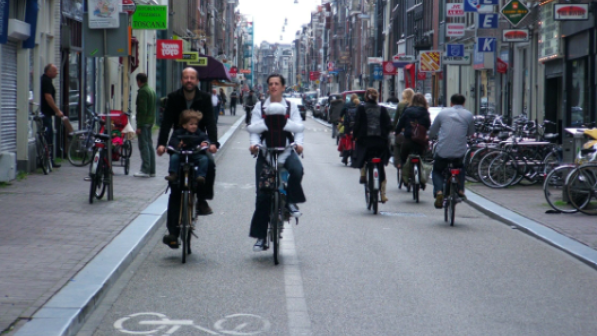Designing for car dependency – planning for poor health

Last week, Cycling UK’s policy director Roger Geffen submitted our response to the UK Government’s planning White Paper ‘Planning for the future’: a consultation on a package of proposals for reform of the planning system in England.
Planning is a devolved matter in the UK so our response, attached to this article, comments on England-specific proposals, but the general principles around the need to put active travel at the heart of planning policy are crucially important across the UK.
A House of Commons Select Committee on Housing, Communities and Local Government is currently holding an inquiry looking into the White Paper proposals, so Cycling UK has submitted written evidence to this too.
Making it real for people who aren’t experts
But we’re a cycling organisation, so why are we talking about planning?
It’s because planning policy has such a vital role in tackling the environmental, health and other impacts of transport. Currently, it fails to support cycling and other sustainable transport, and instead promotes car-dependent development, contrary to the Government’s aim to decarbonise transport and its wider legal commitments to progressively decarbonise the economy.
Planning policy has such a vital role in tackling the environmental, health and other impacts of transport. Currently, it fails to support cycling and other sustainable transport.
Duncan Dollimore
But before you switch off, fearing that I am about to delve into the detail of planning policy, law, frameworks and proposals, fear not.
The detail is all set out in Roger’s consultation response, but planning can be a dry and dusty subject. This is precisely why people haven’t always appreciated just how much it impacts on public health, congestion and the need to reduce carbon emissions: things that are impacted by planning policy, but haven’t driven policy implementation on the ground.
So, while the detail matters, it’s equally important to make this real for those who aren’t planning experts, showing the consequences of planning for car dependency and the huge benefits if sustainable transport were actually prioritised, rather than being a planning objective which invariable gets watered down and overlooked by the time construction begins.
A Tonbridge Tale
I don’t think I really appreciated the disconnect between policy and decision making around planning, housebuilding, urban development and public health, until I moved to Tonbridge in Kent a couple of years ago.
I’d moved in with my partner, who’d bought a new-build house on a brand new estate, less than a mile from the town centre as the crow flies. And all of a sudden, I was driving everywhere – to pick up a paper, get to the train station, or just take the dog for a walk away from traffic. I stopped using my Brompton to get to and from the train station, we never walked into town for a drink or to go to the shops, and within a short period of time my travel behaviours had changed.
Instead of an estate built to enable people to easily walk or cycle into Tonbridge town centre, this one designed in car dependency from the outset.
Cycling into town involved a circuitous route out of town, around extremely busy roundabouts, and along an ‘A’ road only the brave would choose to cycle on during rush hour.
Walking into town wasn’t much better, with no direct route, lots of pavement parking, and half an hour negotiating narrow pavements alongside heavily congested roads.
Designing out travel choices

So, my partner was driving me to and from the train station, and her daughter to and from college, and we rarely went to Tonbridge to loiter, shop or spend time in the high street.
The penny dropped for me when I was sitting at my desk at home thinking about what I might talk about later in the year at the Landor active travel conference. I knew that the number of short journeys undertaken by car, the health consequences of car-dependant lifestyles and the urgent need to encourage more walking and cycling would all be raised by others at the conference, and I was thinking about why people don’t change their travel behaviour and choose active travel?
Then it occurred to me that I was looking at this through the wrong end of the telescope, because many people haven’t really made a choice; rather, they haven’t been given one.
The travel behaviour we’re seeing is what we’ve repeatedly designed for. We design for car-dependency, which inevitably means planning for poor health.
Duncan Dollimore
If we want people to ditch the car for short journeys and opt for active travel, then walking and cycling have to be easy and attractive choices.
But we’re still building housing estates without active travel corridors to local shops, schools and amenities, instead of designing to give people a chance to change.
“We will use our cars less”
I can’t do Roger’s detailed submissions justice where, but in essence they’re a policy response that reflects my lived experience in Tonbridge, and the need for planning system reforms which ensure that we create low-carbon, healthy and attractive developments.
Earlier this year, the UK Government’s ‘Decarbonising Transport: setting the challenge’ document stated that: “Public transport and active travel will be the natural first choice for our daily activities. We will use our cars less…”.
We were delighted with the ambition, and responded to the consultation (full and summary versions) calling for policies aimed at:
- Reducing the lengths of journeys – planning and locating new developments so housing, employment and retail opportunities are closer to one another (“destination shifting”).
- Enabling people to switch from car travel to healthier and more sustainable alternatives (“mode shifting”).
The planning system needs to support those aims, and our response to the White Paper explains why development needs to be concentrated in places with good public transport provision, in order to avoid car dependence, and the resulting poor conditions for cycling, walking and public transport.
Where it doesn’t, and development takes place in car-dependent locations without good public transport, this inevitably creates pressures for car-dependent design, with large amounts of land being given over to road space and car parking. This not only reduces the opportunities to provide greenspace and a pleasant urban realm, but also results in lower residential densities, depriving public transport of the density of demand needed to be economically viable, while also increasing the length of walking and cycling journeys.
It then becomes harder to achieve the ‘15 Minute City’ or the ‘20 Minute Neighbourhood’, where people can meet their main everyday needs within a short walk from home, with good options for cycling, walking, and public transport.
Transport for New Homes
The need for change is highlighted best in a recent report by Transport for New Homes, which reported that:
- Most housing developments are linked with road 'improvements' – with locations often being chosen specifically to provide developer funding for roads, and road access often seen as more important than proximity to town centre facilities or public transport.
- Large areas of land in new developments are given over to road and car parking, with little space left for tree planting, green space or an attractive public realm.
- As a result, residential densities are often as low as 20 dwellings per hectare, which worsens car dependence by increasing the walking or cycling distances to key destinations, and by making demand for public transport services less concentrated.
- Conversely, walking and cycling routes, where they exist, are often out of the way, unlit and poorly surfaced, with good walking, cycling and public transport connections to other nearby destinations even rarer.
White Paper proposals
It’s not entirely clear how the White Paper’s proposals will address these problems, as there’s no mention of sustainable transport within it, so our response seeks clarity on many of those proposals.
We’re unsure for example: whether the definitions of ‘growth’, ‘renewal’ and ‘protected’ areas will guide housing or other developments towards locations which support sustainable transport patterns, rather than car-dependence; and how the proposed single sustainability test will reflect the likely transport patterns arising from any proposed development location, and whether these support or conflict with sustainability, health and other objectives.
There’s also a proposal for a new, simplified, ‘Infrastructure Levy’, which could be highly beneficial, but it’s unclear how much funding it’s likely to raise, or whether it will be used to deliver sustainable transport provision or road schemes.
But I am descending into policy detail, which is all set out in Cycling UK's official response.
Planning needs to enable choices
The key point is that we need politicians and decision makers to wake up to the importance of planning in enabling active travel choices, and the potential impact of planning policy and decisions in reducing car dependency, congestion, air pollution, road danger and physical inactivity.
The parliamentary timescales are unclear, but we’re expecting legislative proposals flowing from the White Paper and linked consultation to come before Parliament next year. We’ll be looking to support people to raise concerns with their MPs at that time, with campaigner’s guides on why active travel needs to be at the heart of planning policy, bullet points to put to MPs, draft letters and other ‘how to’ information and materials.
Choose cycling, choose health
We’re going to have to make this dry and dusty subject real for people who aren’t experts, otherwise we’re going to carry on designing for car dependency and planning for poor health. We need a planning system that enables people to choose cycling, choose health, and supports sustainable communities.
